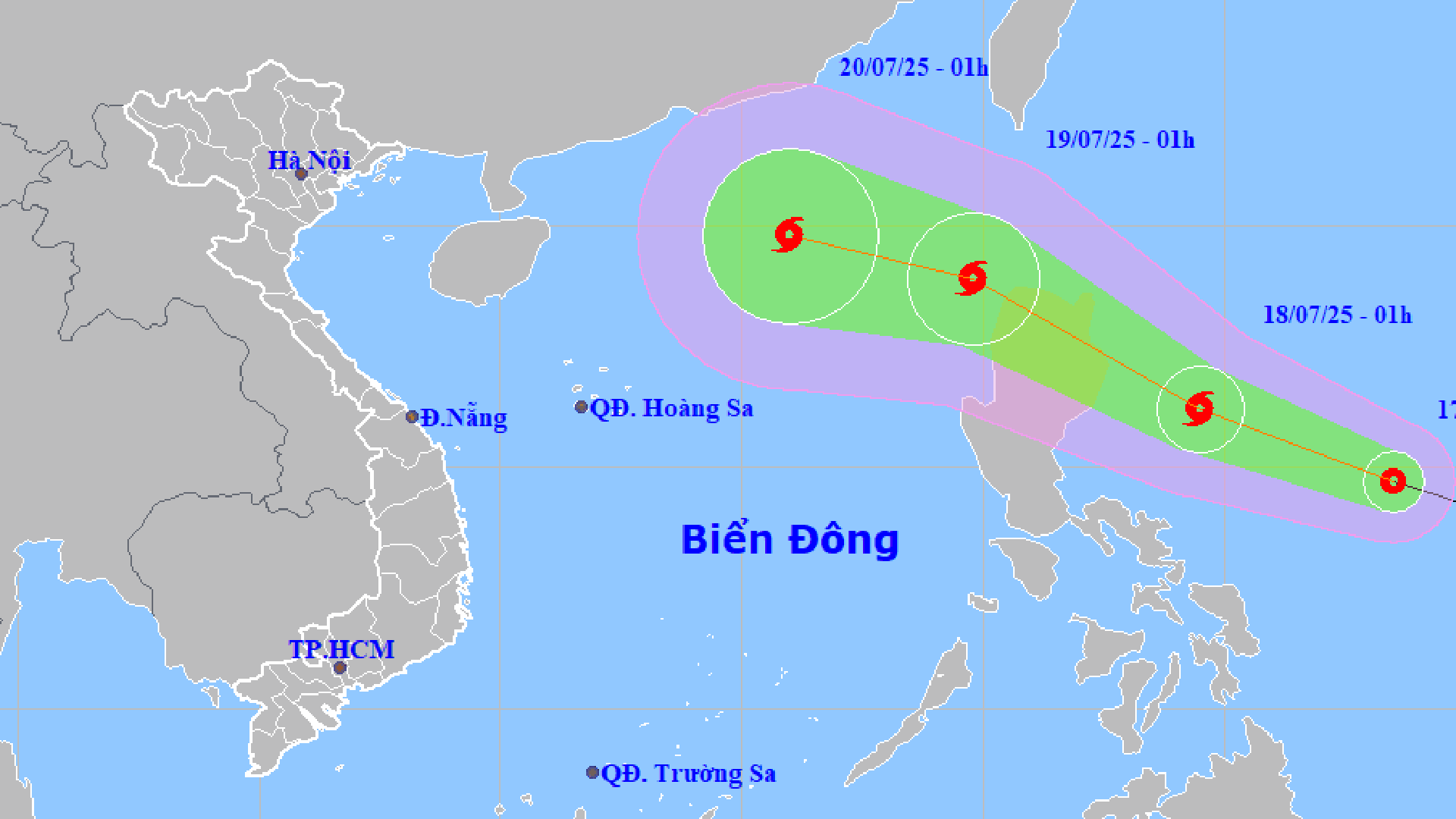At 1:00 a.m. on July 17, the center of the tropical depression in the sea east of the Philippines had the strongest wind near the center of the tropical depression at level 6-7 (39-61 km/h), gusting to level 9. In the previous hours, the tropical depression moved west-northwest at a speed of about 20 km/h.
The assessment on the morning of July 17 shows that the tropical depression will enter the East Sea on the night of July 18. Thanks to favorable conditions of a very warm sea surface, the storm will increase in intensity very quickly. It is likely that this will be a very strong storm this year in the East Sea.
Specifically, within 24 hours (from 1:00 a.m. on July 17), the tropical depression moved rapidly in the west-northwest direction, traveling about 20km per hour and strengthening into a storm.
At 1:00 a.m. on July 18, the storm center was in the sea east of Luzon Island, Philippines, with a strong intensity of level 8, gusting to level 10.

In the next 24-48 hours, the storm will move northwest, continuing to maintain a very fast speed of about 20-25km/h and is likely to strengthen.
At 1:00 a.m. on July 19, the storm center was in the eastern part of the North East Sea with a strong intensity of level 10, gusting to level 12. Thus, in just one day, the storm could increase by 2 levels.
It is forecasted that in the next 48 to 72 hours, the storm will move mainly in the west-northwest direction, traveling 15-20km per hour and may strengthen further.
According to the National Center for Hydro-Meteorological Forecasting, the forecast of the storm's development in the East Sea will be very complicated and unpredictable, requiring continuous updates of the latest forecasts.
Further assessment, from mid-July to October 2025, there will be about 6-7 storms/tropical depressions active in the East Sea, of which about 3 can directly affect our mainland.
Previously, in May and June, there were 2 storms and tropical depressions in the East Sea. Of which, storm No. 1, although not directly making landfall in our country, caused a record flood in June for the central provinces, from the southern region of Ha Tinh to Quang Ngai.
Source: https://baolaocai.vn/ap-thap-nhiet-doi-di-chuyen-rat-nhanh-du-bao-thanh-bao-rat-manh-post648964.html





































































































Comment (0)